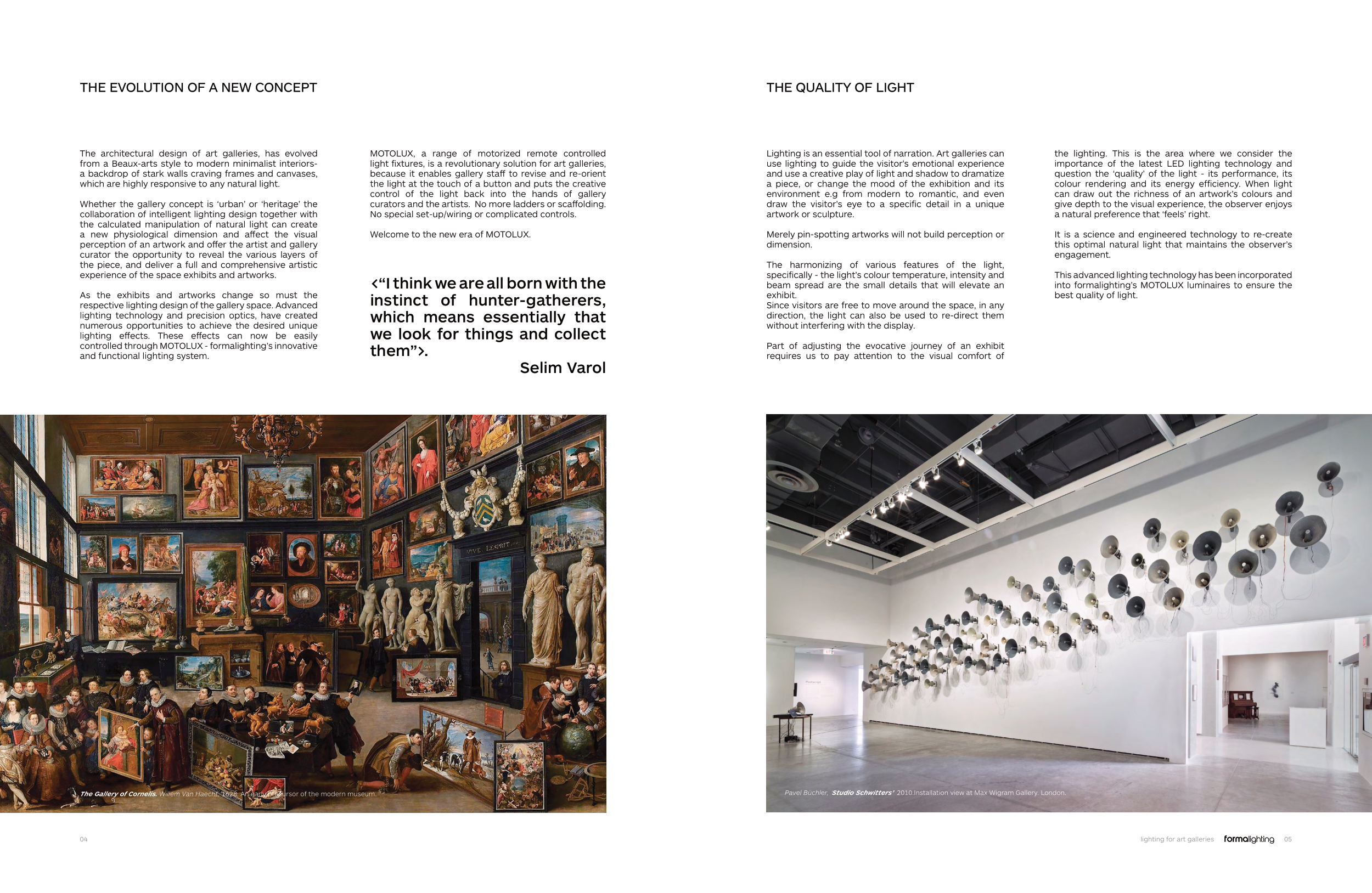05
lighting for art galleries
04
MOTOLUX, a range of motorized remote controlled
light fixtures, is a revolutionary solution for art galleries,
because it enables gallery staff to revise and re-orient
the light at the touch of a button and puts the creative
control of the light back into the hands of gallery
curators and the artists. No more ladders or scaffolding.
No special set-up/wiring or complicated controls.
Welcome to the new era of MOTOLUX.
Pavel Büchler, ‘Studio Schwitters’ 2010.Installation view at Max Wigram Gallery. London.
THE QUALITY OF LIGHT
Lighting is an essential tool of narration. Art galleries can
use lighting to guide the visitor’s emotional experience
and use a creative play of light and shadow to dramatize
a piece, or change the mood of the exhibition and its
environment e.g from modern to romantic, and even
draw the visitor’s eye to a specific detail in a unique
artwork or sculpture.
Merely pin-spotting artworks will not build perception or
dimension.
The harmonizing of various features of the light,
specifically - the light’s colour temperature, intensity and
beam spread are the small details that will elevate an
exhibit.
Since visitors are free to move around the space, in any
direction, the light can also be used to re-direct them
without interfering with the display.
Part of adjusting the evocative journey of an exhibit
requires us to pay attention to the visual comfort of
the lighting. This is the area where we consider the
importance of the latest LED lighting technology and
question the ‘quality’ of the light - its performance, its
colour rendering and its energy efficiency. When light
can draw out the richness of an artwork’s colours and
give depth to the visual experience, the observer enjoys
a natural preference that ‘feels’ right.
It is a science and engineered technology to re-create
this optimal natural light that maintains the observer’s
engagement.
This advanced lighting technology has been incorporated
into formalighting’s MOTOLUX luminaires to ensure the
best quality of light.
The architectural design of art galleries, has evolved
from a Beaux-arts style to modern minimalist interiors-
a backdrop of stark walls craving frames and canvases,
which are highly responsive to any natural light.
Whether the gallery concept is ‘urban’ or ‘heritage’ the
collaboration of intelligent lighting design together with
the calculated manipulation of natural light can create
a new physiological dimension and affect the visual
perception of an artwork and offer the artist and gallery
curator the opportunity to reveal the various layers of
the piece, and deliver a full and comprehensive artistic
experience of the space exhibits and artworks.
As the exhibits and artworks change so must the
respective lighting design of the gallery space. Advanced
lighting technology and precision optics, have created
numerous opportunities to achieve the desired unique
lighting effects. These effects can now be easily
controlled through MOTOLUX - formalighting’s innovative
and functional lighting system.
THE EVOLUTION OF A NEW CONCEPT
<“I think we are all born with the
instinct of hunter-gatherers,
which means essentially that
we look for things and collect
them”>.
Selim Varol
The Gallery of Cornelis. Willem Van Haecht, 1628. An early precursor of the modern museum.


